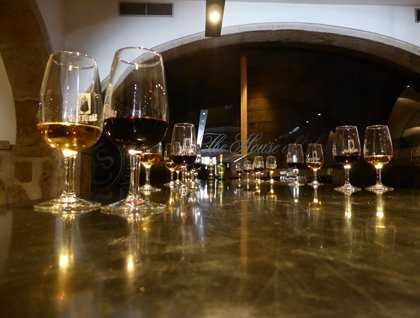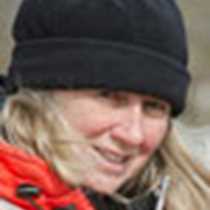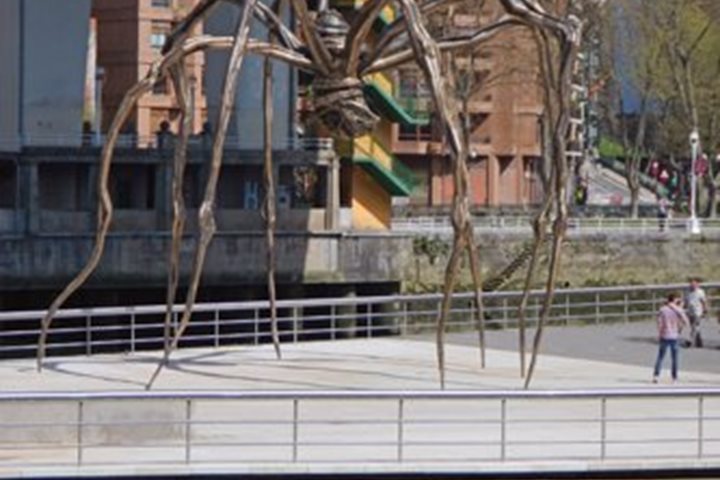At the end of the day, fragments of facts drift through our minds accumulated by various means. A port is a harbor and a sweet wine. A Scotsman founded a port winery. Bagpipes are a traditional instrument in Galicia and not only in Scotland or Ireland. There are a lot of churches in Europe. And we are leaving Portugal behind. But, maybe we should go back to the beginning of the day and explain ourselves a bit.
There is a tranquility found with simplification. The mists of morning reduced our world to a slate of white resting on a smooth black palette. Each element added was the recipient of our total attention. A splash of foam piled upon the shore. Two gannets slowly moved across the scene. From inside, behind the windowpane, the approaching pilot boat seemed as silent as its reflection upon the mirror-like waters. And then suddenly, we found ourselves within the harbor of Leixões at the mouth of the River Douro and the world was filled with hustle and bustle. Mountains of granite blocks and hillocks of crushed glass awaited export. An automobile swung from a crane, lifted from the hold of a freighter. Here was a very busy port.
On the north bank of the river, less than 10 kilometers away, was the town of Porto, the destination for half of our group today. Immediately one had to query, “What is the real name of this city?” It seems the English were the source of our confusion starting as far back as the 18th century. In Portuguese, one says “Oporto” with the initial “o” being the article “the”. In other words, Oporto means “the port”, while the name of the town is simply Porto. Early immigrants however heard Portuguese conversations and assumed that the article was an integral part of the name. Learning to say thank you was almost as confusing. All women say “obrigada” while all men express the thought with “obrigado.”
Now, what about the port? It seems the Douro River plays a role in bringing all the necessary ingredients together to make that perfect wine called port. Upstream in the Douro Valley, ideal conditions promote the growth of grapes of many varieties. Aging wine requires stable cool temperatures that can be found a simple boat trip away. Granite outcroppings nearby are sources of insulating building blocks for above ground cellars on the bank of the river and it was here, first in Porto and then in Gaia, that the wineries positioned themselves. We sampled and approved of the products produced by Sandeman’s Winery, founded by the Scotsman George Sandeman in the early 1800’s. The bagpipe tidbit however had nothing to do with port. It was simply a factoid gleaned at Recap in preparation for our next stop in the land of the Basques.
And yes, there are a lot of churches, each one more fascinating or ornate than the others. The 12th-century Cathedral of Porto vied with that of the church of São Francisco for amazing wooden carvings covered in gold leaf. A more distant excursion took in the Bom Jesus Sanctuary and the Cathedral of the city of Braga.
Both old and new were explored today. Medieval Guimarães, the birthplace of Portugal’s first king, hosted half our group while the very modern Casa da Música in Porto entertained the others. And then there were those who chose to explore the colorful buildings and tiles of the old town too.
Tonight we leave Portugal behind and sleep in anticipation of tomorrow.






